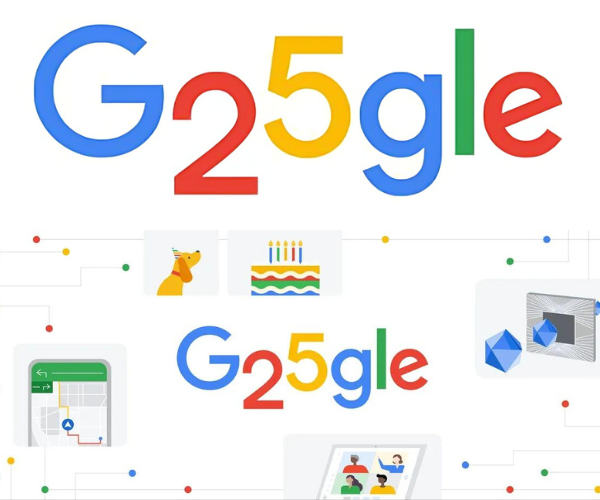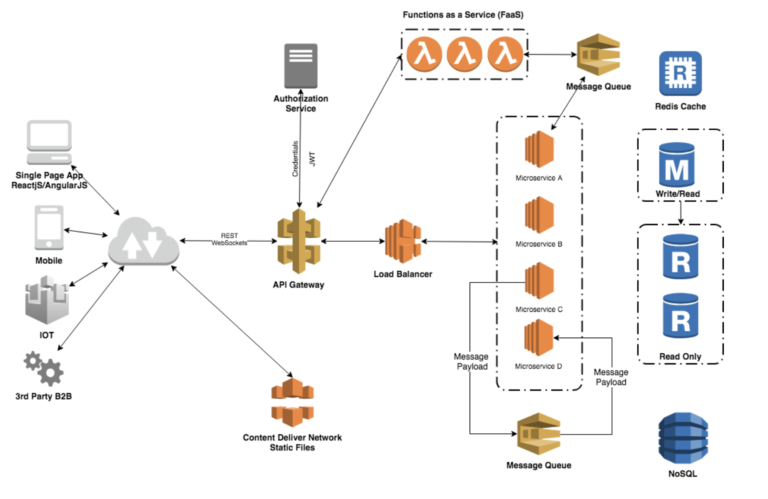7 Programming Languages for Mobile App Development
In the mobile app development industry, different programming languages have roles that define how this field looks like.
They act as tools for the development of apps on various platforms such as Android and iOS.
It is important for those who want to create mobile apps using these programming languages that they can understand the overview of them.
1. Java: Android App Development Foundation
Android programs are based on Java which is considered a fundamental programming language. It acts as the main language for developing applications meant to run on the Android platform. Sun Microsystems being the developer of Java, its popularity and platform independence make it a good strength in mobile app development.
Android Studio, which is the official integrated development environment (IDE) for Android, supports Java as the main programming language. Utilizing its object-oriented and rich library, developers construct solid scalable Android applications using Java.
One of the most intriguing features of Java is its “Write Once, Run Anywhere” (WORA) functionality that enables developers to write code for various devices without modification. This helps to improve the effectiveness of the development process and increases Android app functionality.
Moreover, if you’re considering developing an application by hiring a Java developer then the app development cost in UK is around £10,000 to £500,000.
However, these figures are just estimates; the actual cost varies depending on your specific project requirements.
2. Swift: Empowering iOS App Developers
Swift is a programming language used by iOS app developers. It is a product developed by Apple that promises to be efficient, contemporary, and quick learning. Since its introduction in 2014, Swift has quickly become the language of choice for building applications on Apple’s iOS and macOS platforms.
One of the key strengths of Swift is its performance. With a focus on speed, it is built to offer the best optimization that makes iOS apps run faster and better. This helps to ensure a seamless user experience and quicker response times for the app.
Swift has a compact and readable syntax allowing for easier maintenance. This functionality is especially useful for developers working on large and intricate iOS projects as it minimizes the possibility of mistakes while making collaboration with other team members easier.
Another advantage of Swift is its safety features. The language aims to avoid typical programming errors such as null pointer dereferencing which can cause apps to crash. This leads to more secure and stable iOS applications.
In addition, Swift is interoperable with Objective-C, which gives developers the ability to use existing app code and libraries within projects. This smoothens the migration process for programmers who developed iOS apps in objective C.
3. Kotlin: Modern Approach to Android App Programming
Kotlin represents a contemporary perspective on Android app programming because it is an up-to-date coding language. Google has also recognized Kotlin as an official language for Android development which helps to make this process more efficient and concise when it comes to developing applications on the operating system.
One important feature of Kotlin is its interoperability with Java, which was traditionally used for writing codes in Android. This enables the developers to smoothly intermix Kotlin with its current Java codebases and enable a steady transience and adoption. The concise nature of Kotlin’s syntax, as well as decreased boilerplate code, improves readability and ease of maintenance.
Kotlin is built to prevent typical programming mistakes and increase the trustworthiness of Android apps. Its null-safety features assist in avoiding the null pointer exceptions, which are pretty common for bugs in software development. This helps in the development of better and more reliable Android apps.
Coroutines, a feature introduced in Kotlin, simplify asynchronous programming in Android apps. They help organize the background tasks and bring improved app responsiveness with a better user experience. The implementation of coroutines has been a feature that developers working on Android applications would particularly welcome.
4. React Native: Building Cross-Platform Mobile Applications
React Native is a framework dedicated to the development of cross-platform mobile apps. It is created by Facebook and it allows developers to create mobile apps that can run on both iOS with Android platforms using a single codebase.
The code reusability approach is one of the essential benefits React Native offers. Developers can write most of the code in JavaScript and then apply it to various platforms hence no need for a separate coding base between iOS and Android. This not only economizes time but also assures that the functioning and design of the app remain uniform on different devices.
React Native uses a declarative style of programming, allowing developers to describe the desired UI and the framework takes care of rendering it efficiently. This simplifies the development process, making it easier for developers to create complex user interfaces.
The other React Native feature that improves development is hot-reloading. This enables developers to see the immediate impact of code changes without having to rebuild an entire application. This reduces the development cycle which makes quick testing and debugging possible.
5. Flutter: Google UI Toolkit for App Development
Flutter is a UI toolkit developed by Google for app development. It enables developers to write once and then compile natively on mobile, web, or desktop from a sole source. On the other hand, building a UI consistent across multiple platforms is another characteristic of Flutter.
Flutter’s key strength is its widget-based architecture. All of Flutter is a widget, starting with primitive elements like buttons and ending up with sophisticated layouts. This modular approach allows developers to structure and customize UI elements properly, providing a convenient way of forming visually refined interfaces.
Flutter provides a hot-reload feature, allowing developers to instantly see the effects of code changes without restarting the app. This makes the development process faster and boosts productivity by allowing fast experimentation and bug fixes.
The framework is based on the Dart programming language, which provides a reactive and declarative approach to development. This allows developers to describe how the UI should appear given where the app is currently, making it easier to manage updates in the user interface.
As shown by the use of the Skia graphics engine, Flutter’s goal is to build high-performance applications. This engine provides a smooth and uniform graphical display on various devices, leading to an uninterrupted user experience.
6. Python: Expanding Horizons in Mobile App Programming
Python is a robust and multipurpose programming language with the highest popularity among mobile app programmers. Despite not being traditionally considered part of mobile development, Python has experienced an increase in popularity over the years because it is simple to use, highly readable, and above all there are frameworks available for building apps on mobiles.
Kivy and BeeWare are two of the most popular frameworks that help in developing mobile apps with Python.
Kivy is an open-source Python library for multipoint applications and BeeWare provides tools such as Toga to create native interfaces. These frameworks utilize the power of Python to create cross-platform applications in which developers can write code once and deploy it all over different platforms.
The main advantage of Python used in mobile applications software development is its concise and clear syntax. This allows beginners and skilled programmers alike to use it, which means a shorter learning curve for both parties plus the development of code in an efficient manner.
The readability of the language is also a factor that can help promote cooperation among members working on mobile application projects.
Additionally, the massive library of libraries and modules supported by Python gives developers a far-reaching variety of tools to bolster their mobile app function.
Integration with popular libraries for data analysis, machine learning, and web development opens up possibilities for creating feature-rich and innovative mobile apps.
7. Objective-C: Legacy Language for iOS Development
Objective-C is a programming language that holds the status of a legacy language in the context of iOS development. It is a fundamental language in the development of iOS applications, especially before Swift.
Objective – C was used for several years as the primary programming language in iOS app development and had been initially developed by NeXT company, then also adopted by Apple. It played a vital part in the creation of apps for iPhones, iPads other Apple gadgets.
The legacy status of Objective-C is partly because it has been around for some time in the iOS world. While Objective-C was widely used in most of the early iOS apps, many existing codebases also rely on this particular language.
Although Swift has become the preferred choice for new iOS projects, Objective-C remains relevant for maintaining and updating older apps.
One particular element that makes Objective-C distinctive is its dynamic nature, where features like message passing and runtime manipulation are supported. Although Swift focuses on safety and performance, Objective-C offers different benefits regarding its popularity in the development of iOS-based apps.
Developers who switch to Swift might come across Objective-C code while dealing with projects or libraries that have been already developed. To ensure compatibility and seamless merging of the old codebase with newer ones within the iOS development setting, Objective-C knowledge is required.
BONUS: Xamarin: C# for Multiplatform Mobile Applications
Xamarin is a framework that uses the C# programming language to develop cross-platform mobile applications. Microsoft owns the Xamarin, which makes it easier to produce mobile applications that can run on both iOS and Android devices using a shared codebase.
The main benefit of Xamarin is its use of C# for cross-development. Developers can leverage their existing C# skills to develop mobile applications, thereby minimizing the learning curves associated with using different languages or frameworks for every platform.
Xamarin employs a single codebase approach, allowing developers to write code once and deploy it across different platforms. Not only does this reduce the development process but also ensures that the functionality and design of an app are consistent across both iOS as well Android.
Xamarin provides native API access, which allows developers to use platform-specific features and functions. This ensures that resulting apps provide a native feel on each platform, leveraging capabilities specific to iOS and Android devices.
Integrated with Visual Studio, Xamarin provides a comprehensive development environment for C# developers. The framework offers tools for debugging, testing, and profiling, enhancing the overall development experience.
Bottom Line
The choice of programming language for your mobile project is an important decision that largely influences the efficiency of development and the success or failure of your application.
When it comes to Android app development, Java and Kotlin are popular options. Java is established and widely supported, while Kotlin, with its modern syntax, offers enhanced developer productivity. Assess the familiarity of your team and the specific needs for this particular project to make a decision.
On the iOS side, Swift is now Apple’s language of choice. It gives a lot of speed, security, and smooth integration with Apple’s ecosystem. But Objective-C is still relevant, especially for maintaining old projects.
Cross-platform development is easier with React Native and Flutter. React Native is based on JavaScript and supports code sharing between mobile devices. Using Dart, Flutter offers a complete toolkit for native application development with one code base.
Consider the nature of your project, the skills of your development team, and the long-term maintenance requirements.
Ultimately, a reliable mobile app development in UK with the right programming language that aligns with your project goals will enhance development efficiency and ensure a robust and scalable mobile application.
Keep an for more lastest news & updates on World Times!







